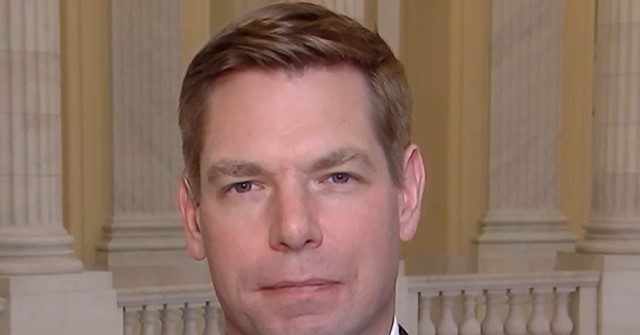On a recent episode of “CNN Newsroom,” Rep. Eric Swalwell (D-CA) voiced his concerns regarding the federal government’s transparency in addressing the issue of unidentified drone sightings. Swalwell highlighted a fundamental problem within the national security framework, emphasizing the need for honesty and openness when communicating with the American public, particularly about national security matters. He criticized the government for delaying information dissemination, suggesting that authorities have been overly cautious in managing these situations. This reticence, he argued, only fuels public speculation and anxiety regarding potential threats.
Swalwell remarked on the inadequacy of government response, suggesting that officials have been “overthinking” how to handle these reports rather than being direct and forthcoming. He articulated that a culture of secrecy often pervades government operations, leading to complications in public understanding and trust. The congressman emphasized the necessity for timely and clear communication, arguing that avoiding transparency ultimately harms both the government and the citizenry. He urged for a shift in this mindset, advocating for a more proactive and honest approach.
Additionally, Swalwell pointed out the incident wherein the FBI issued a warning against shining lasers at aircraft, underlining the potential dangers associated with mistaking drones for other aerial vehicles. He stressed that misidentifications could pose critical safety risks, including the possibility of endangering commercial flights. This statement served to underscore the repercussions of inadequate public awareness and understanding regarding flying drones and other aerial phenomena.
In discussing the issue of unidentified aerial phenomena (UAP), which gained attention in previous congressional hearings, Swalwell lamented a larger pattern of governmental secrecy that heightens public distrust. He noted that many citizens and lawmakers alike are demanding more forthrightness from their government, particularly as curiosity about UAPs escalates. The question of transparency, he argued, extends beyond drone sightings to a broader concern about how the government manages and communicates about potential threats.
Swalwell’s commentary sheds light on a crucial aspect of national security: the balance between protecting sensitive information and adequately informing the public. He challenged the notion that the public is incapable of handling certain truths, suggesting that such overprotectiveness could ultimately lead to misinformation and fear. By fostering an environment of transparency, he believes that the government can cultivate a more informed public, capable of understanding and addressing real threats responsibly.
In conclusion, Rep. Swalwell’s remarks underscore a significant discourse regarding governmental transparency in matters of national security, particularly concerning drone sightings and other aerial phenomena. His advocacy for a shift in communication strategies reflects a growing demand among citizens for honesty and clarity from their leaders. By confronting the challenges posed by excessive secrecy, Swalwell urges the government to promote an informed citizenry, which ultimately enhances both public safety and trust in government institutions. As discussions around national security evolve, it becomes increasingly clear that transparency is paramount in fostering effective communication between the government and the public.

